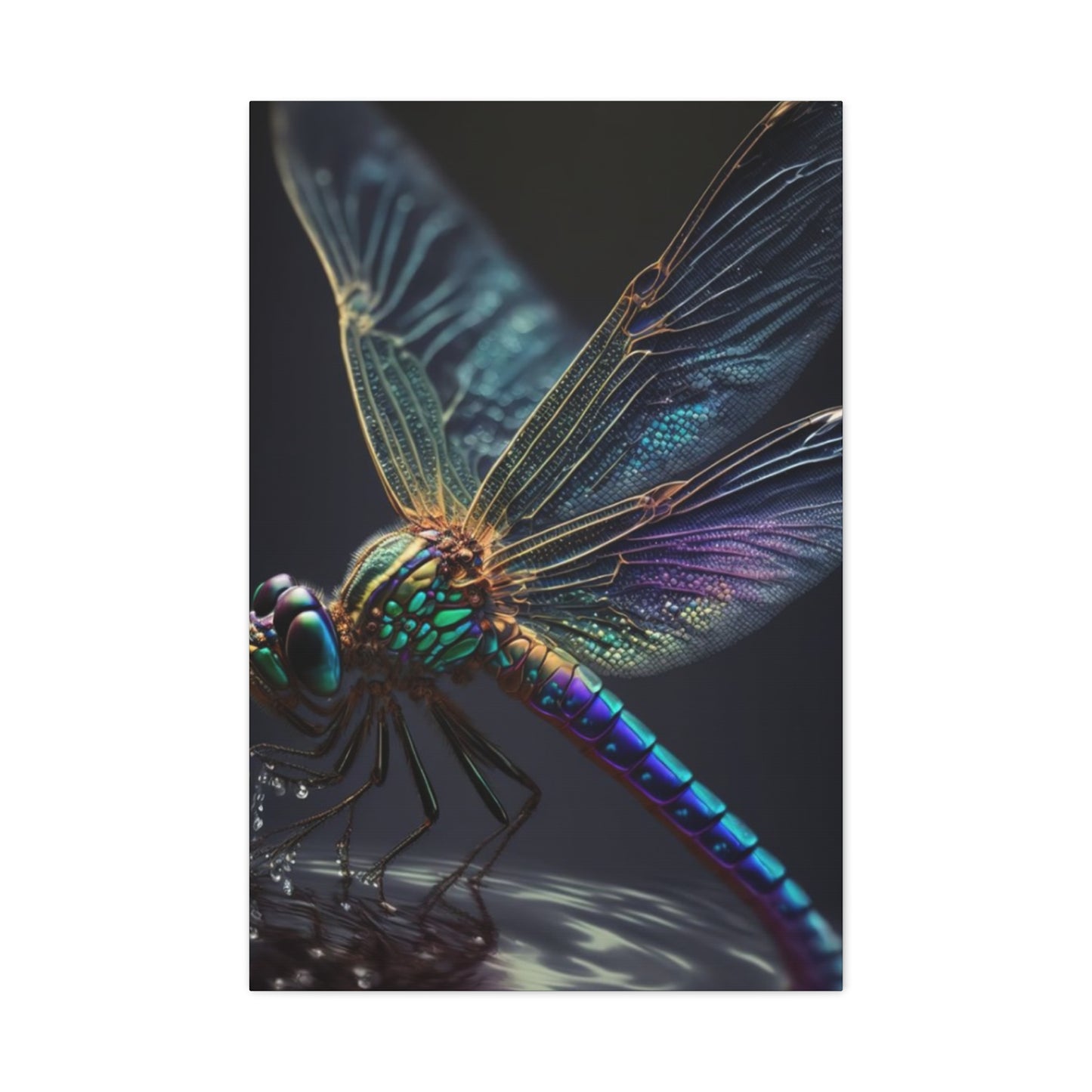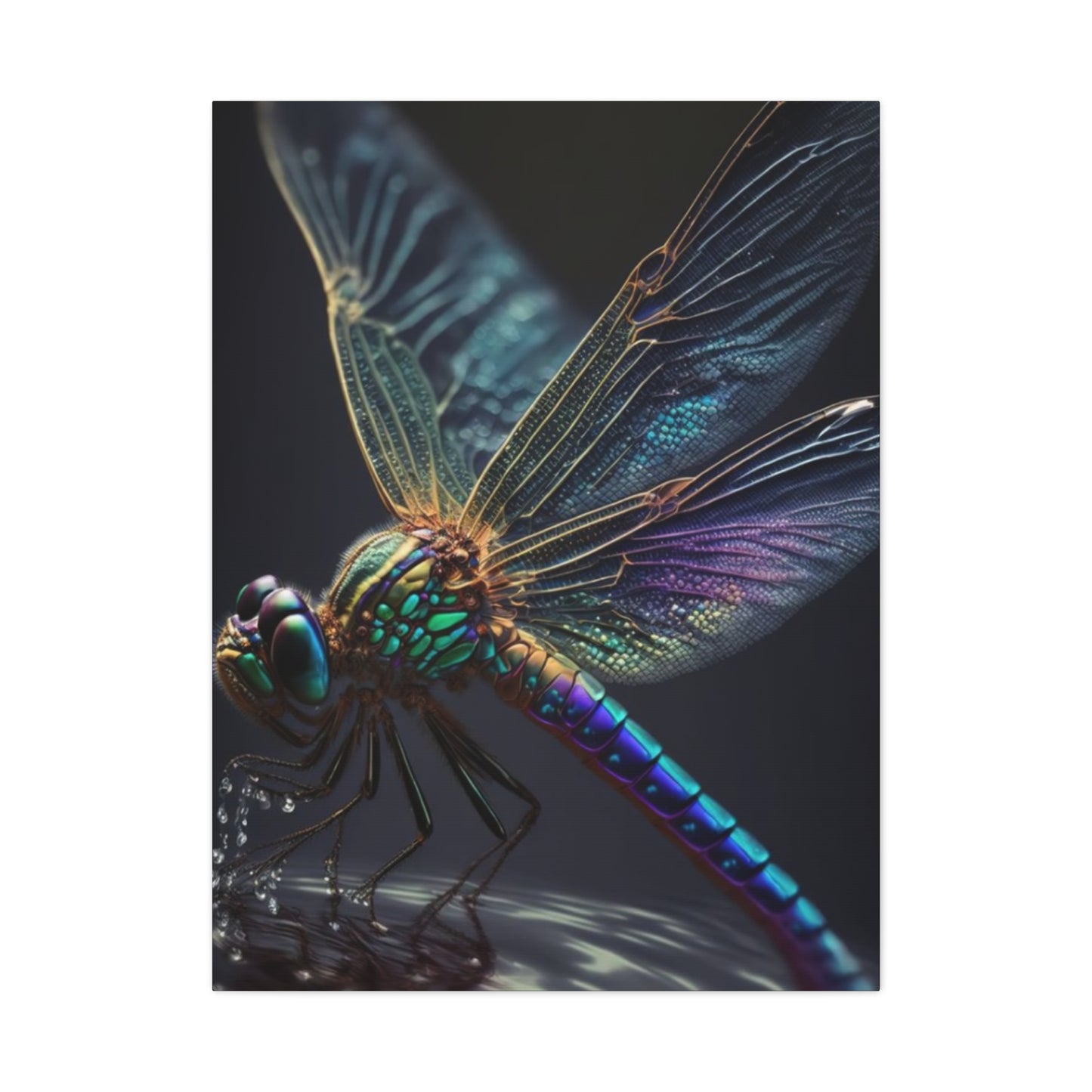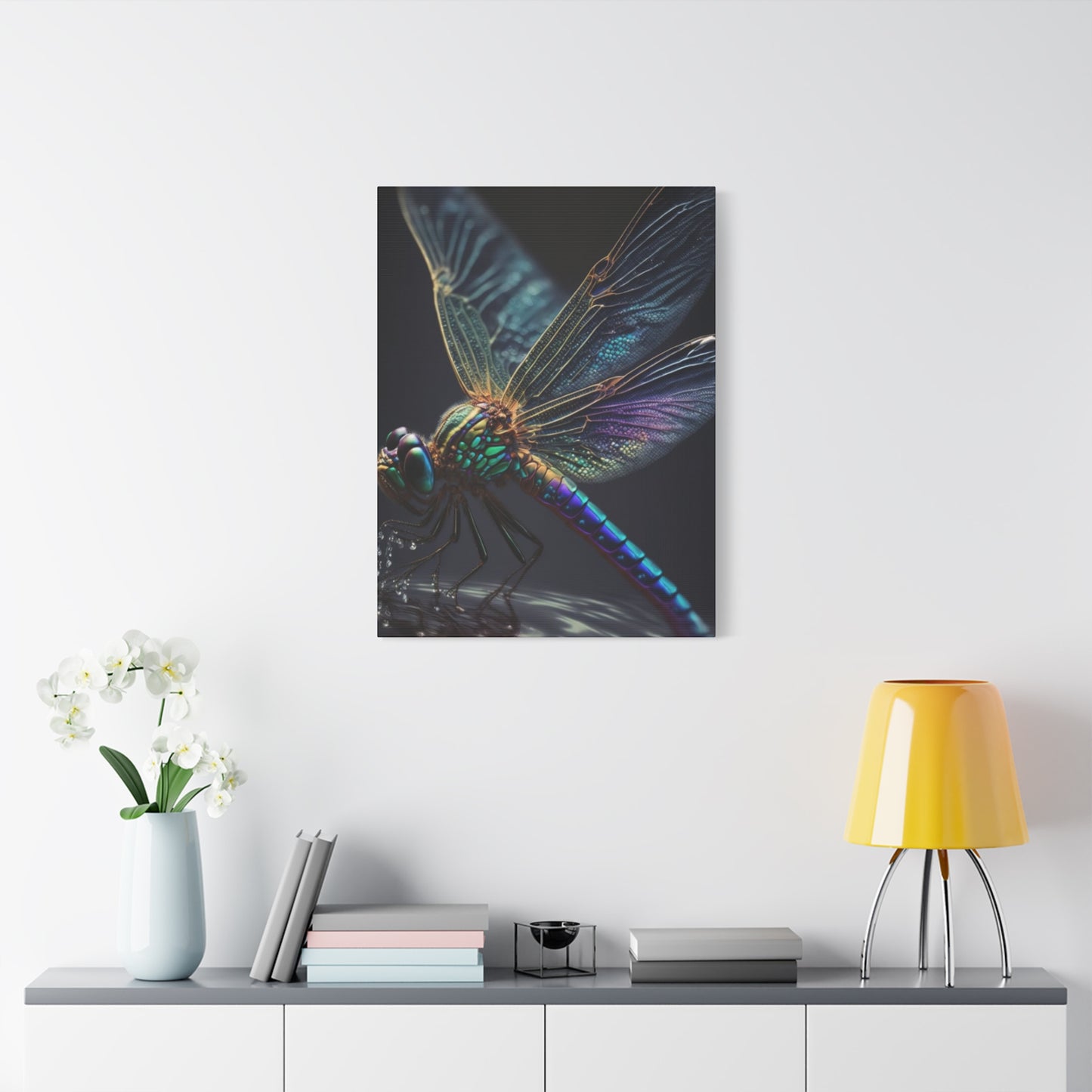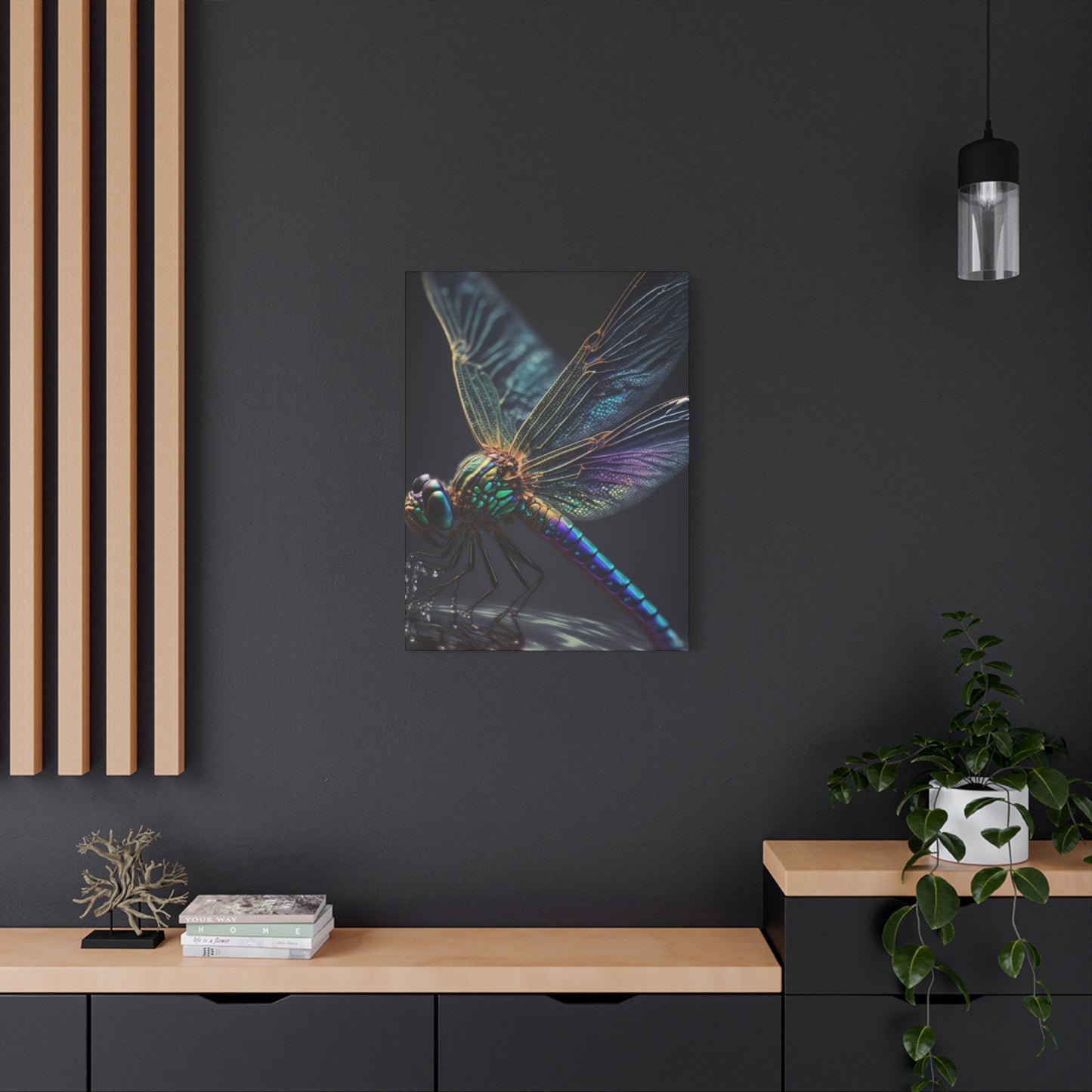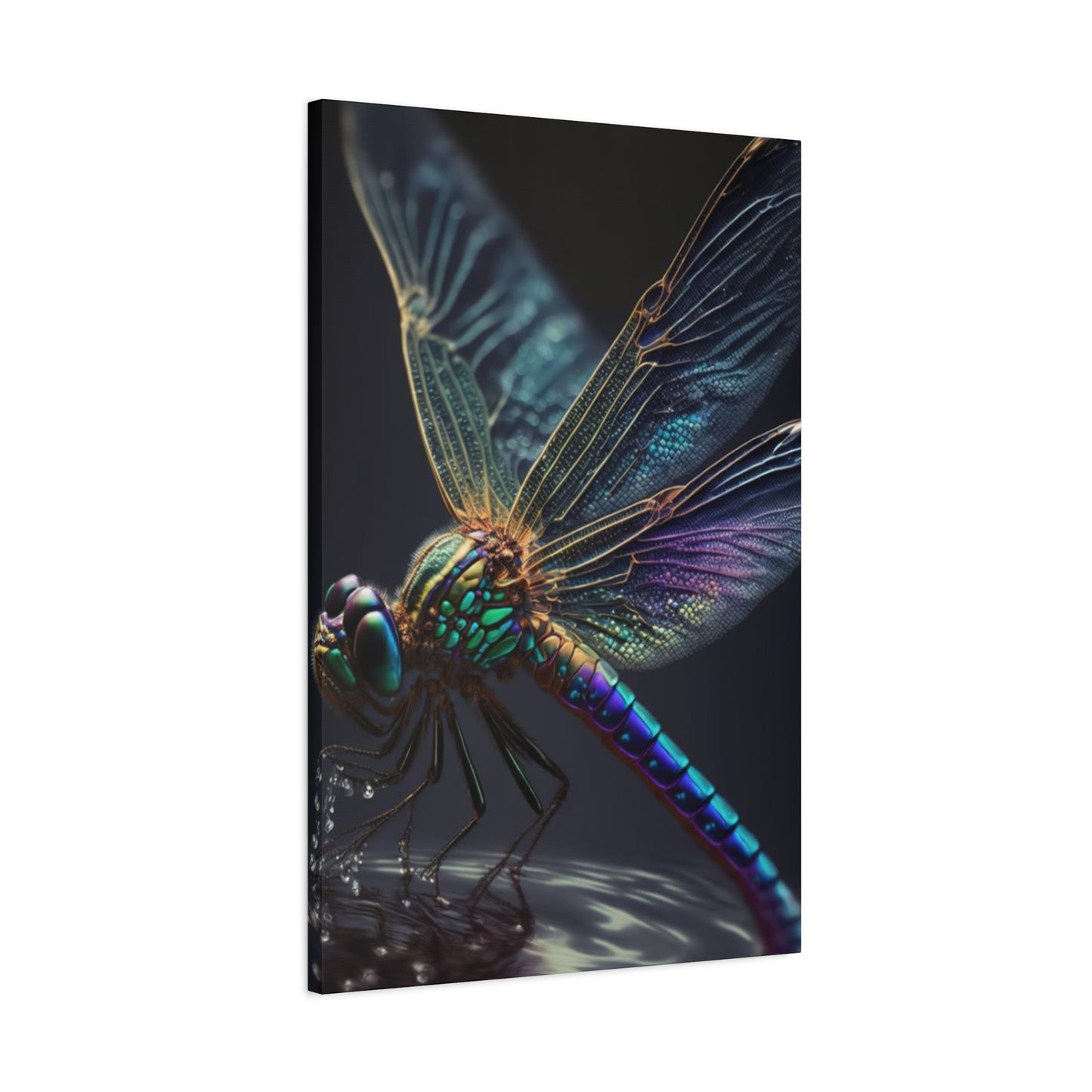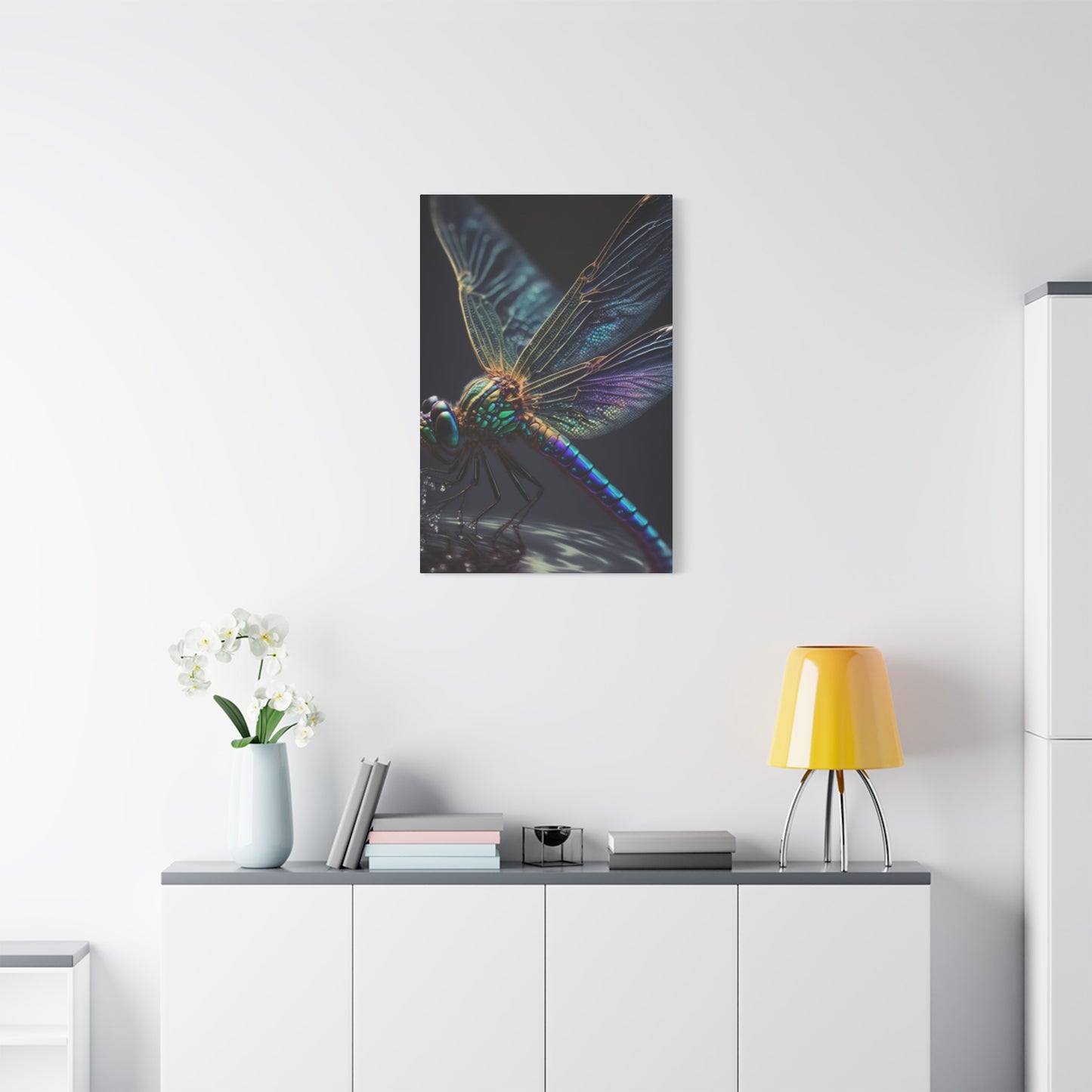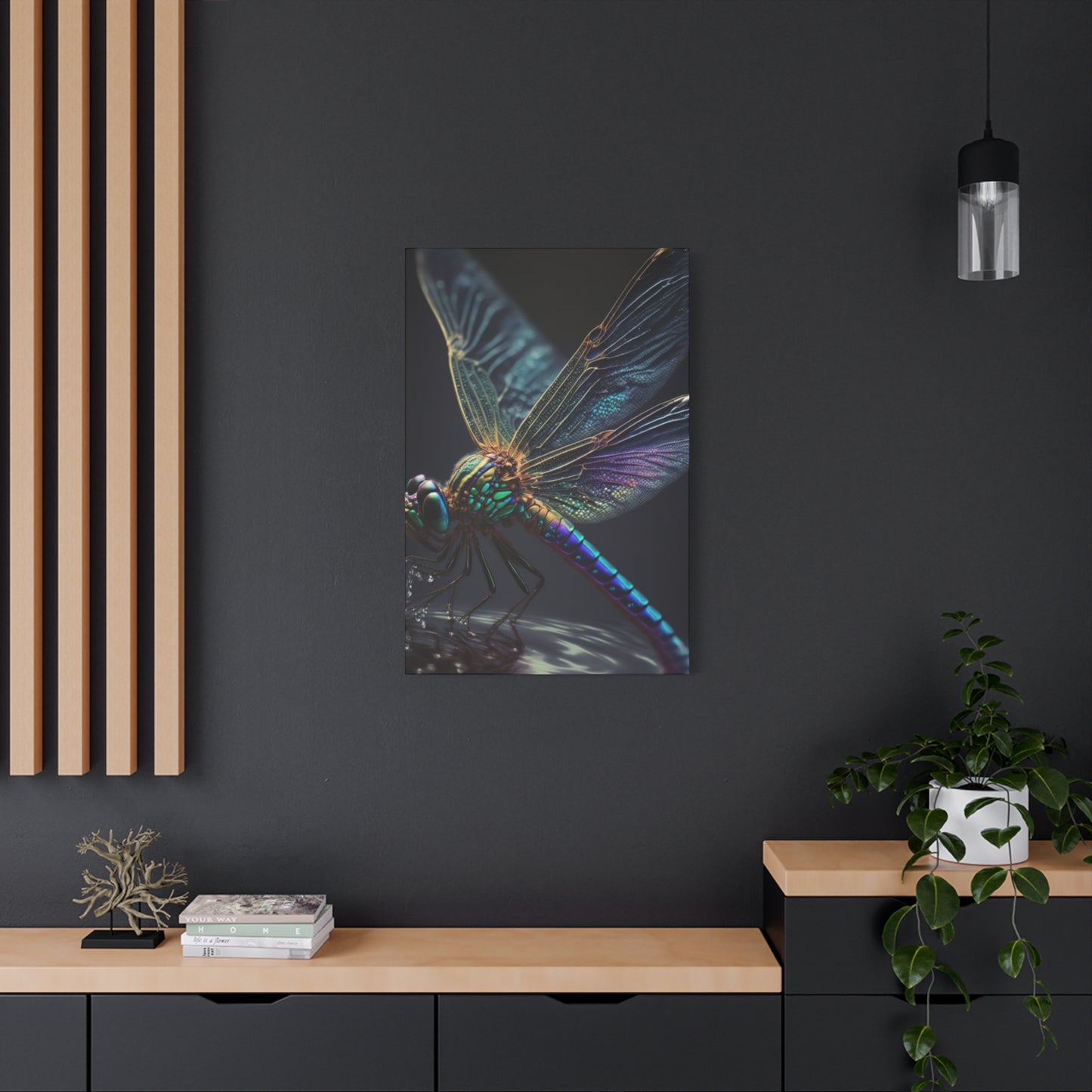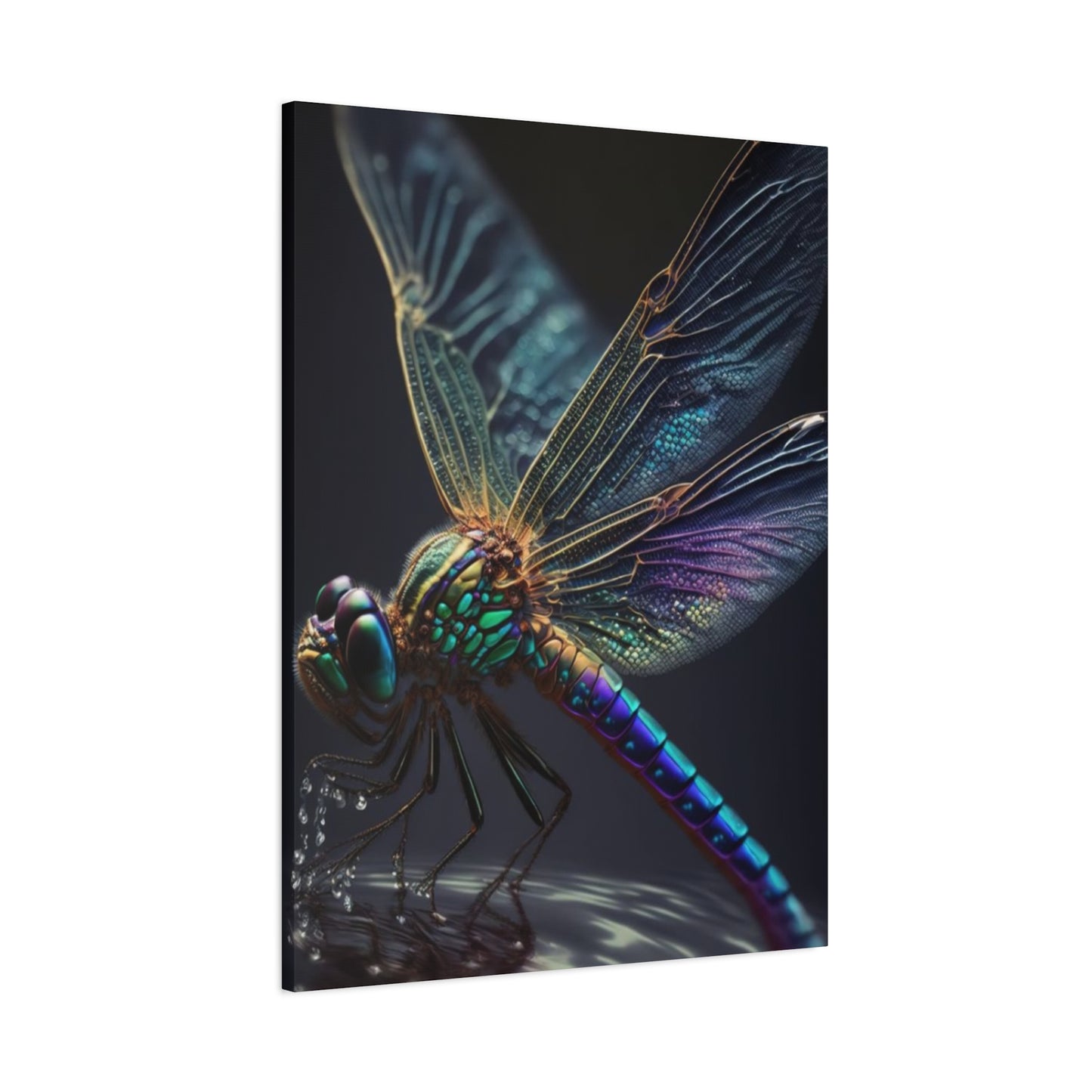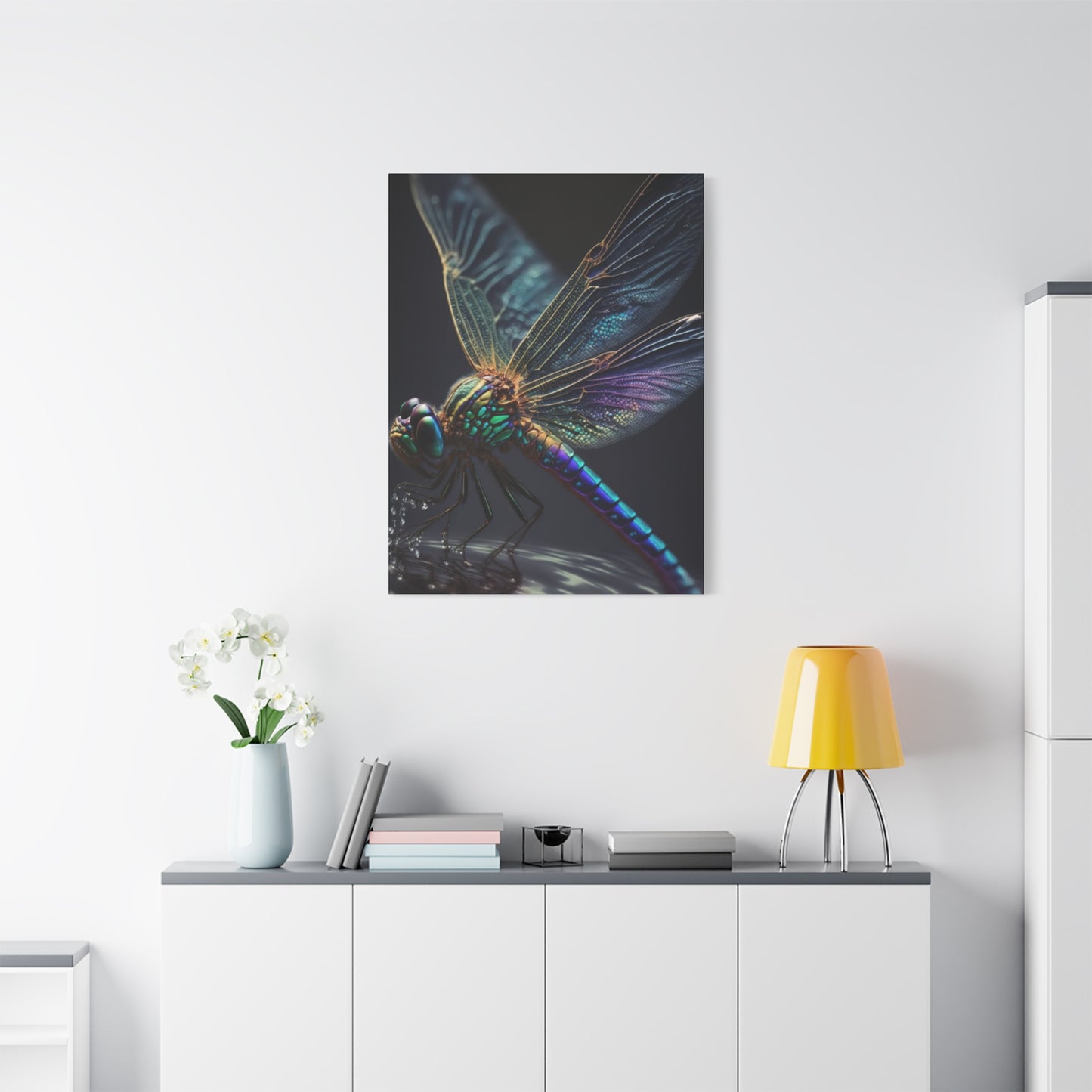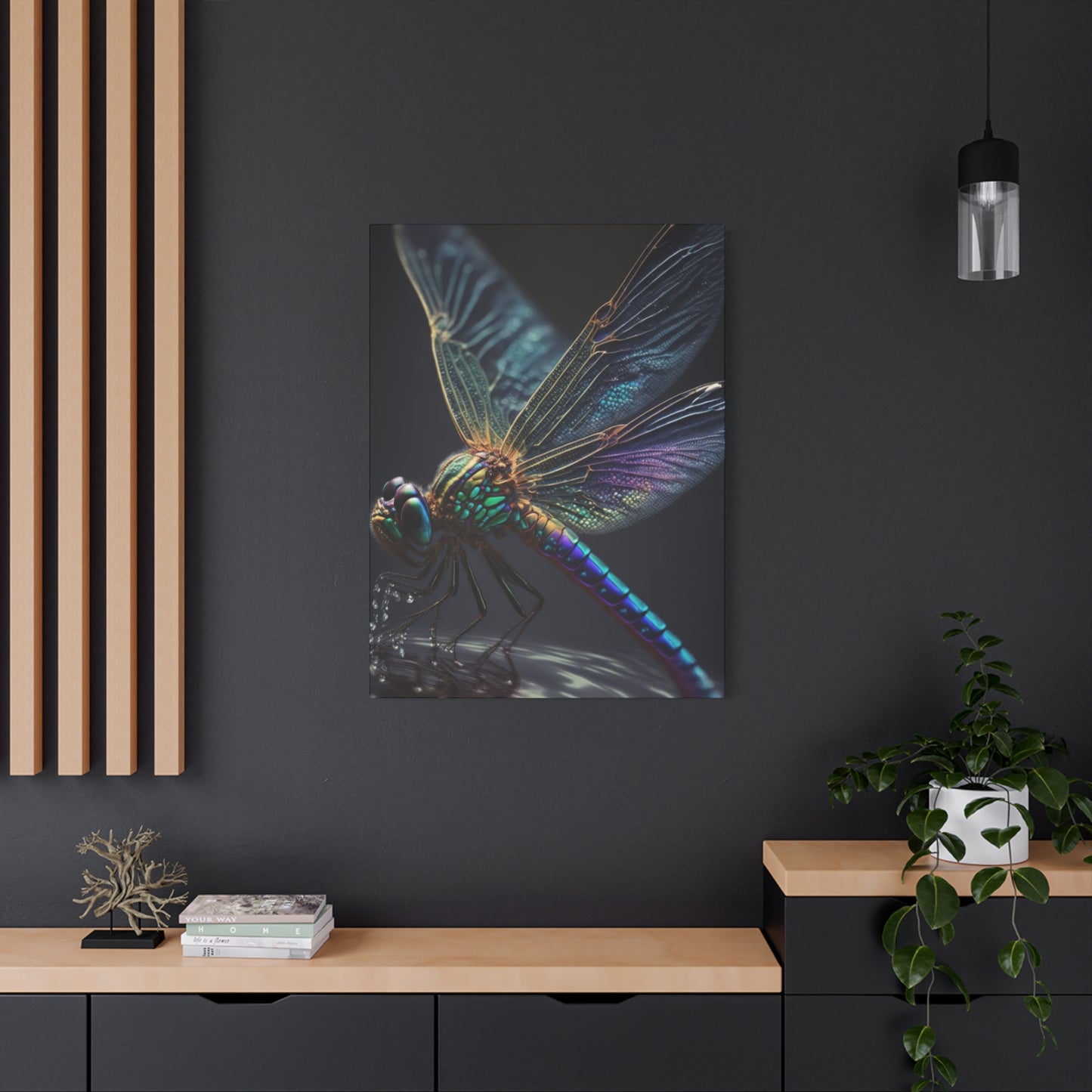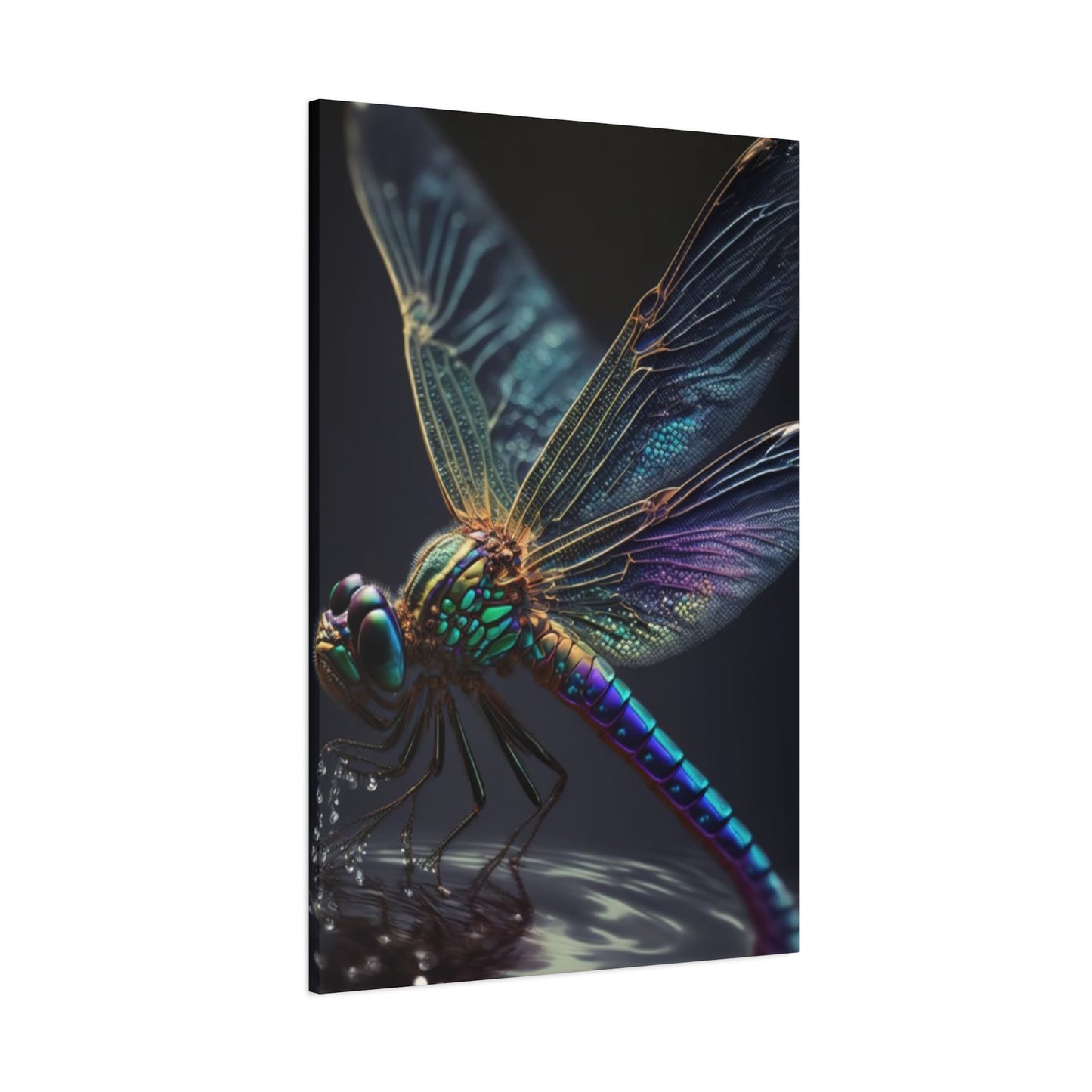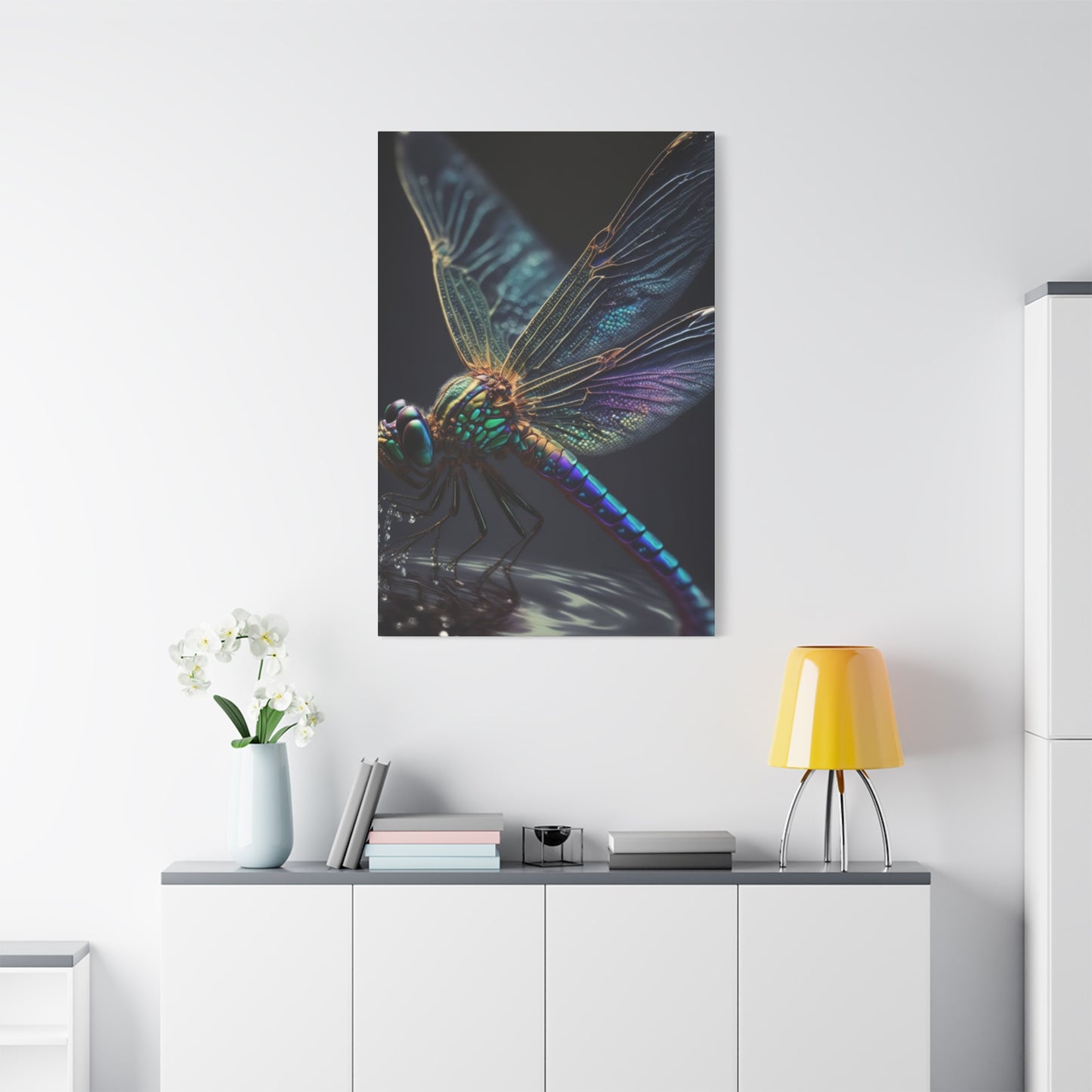The Ultimate Guide to Decorating with Dragonfly Closeup Wall Art and Capturing Nature’s Elegance
Dragonfly wall art represents one of nature's most fascinating creatures through artistic expression, bringing the ethereal beauty of these magnificent insects into our living environments. These delicate yet powerful creatures have captured human imagination for centuries, inspiring artists to create stunning visual representations that celebrate their unique characteristics. From their iridescent wings that shimmer with rainbow colors to their graceful flight patterns that seem to dance through the air, dragonflies offer endless inspiration for artistic interpretation.
The world of dragonfly wall art encompasses a vast array of styles, mediums, and approaches, each offering its own unique way of capturing the essence of these remarkable insects. Whether you're drawn to photorealistic representations that showcase every intricate detail of a dragonfly's anatomy or prefer abstract interpretations that focus on the emotional and spiritual significance of these creatures, there's a dragonfly wall art piece that will resonate with your personal aesthetic preferences.
Contemporary artists and photographers have embraced dragonflies as subjects because they embody so many appealing qualities: grace, transformation, lightness, and a connection to both water and air elements. These insects spend most of their lives underwater as nymphs before emerging as winged adults, making them powerful symbols of change and personal growth. This symbolic richness adds depth and meaning to dragonfly wall art, making it more than just decorative pieces but conversation starters and sources of inspiration.
The popularity of dragonfly wall art has grown significantly in recent years as people seek to bring more natural elements into their homes and workplaces. In our increasingly digital and urban world, artwork featuring natural subjects like dragonflies provides a welcome connection to the natural world, offering viewers a moment of tranquility and wonder amid busy daily routines. The presence of dragonfly imagery can create a sense of calm and serenity, making these pieces particularly valuable for creating peaceful, restorative environments.
From macro photography that reveals the intricate patterns on dragonfly wings to stylized illustrations that emphasize their graceful forms, dragonfly wall art offers something for every taste and setting. The versatility of these subjects means they work equally well in traditional and contemporary settings, bringing natural beauty to any environment while maintaining artistic sophistication.
Dragonfly Closeup Beauty
The mesmerizing world of dragonfly closeup photography reveals intricate details that often escape the naked eye during casual observation of these creatures in their natural habitats. Professional wildlife photographers spend countless hours waiting for the perfect moment to capture these ethereal beings, often rising before dawn to photograph dragonflies during their most active periods when morning light creates optimal conditions for stunning imagery.
Macro photography techniques allow artists and photographers to showcase the incredible complexity of dragonfly anatomy, from the compound eyes that contain thousands of individual lenses to the delicate veining patterns that support their transparent wings. These closeup images reveal textures and patterns that seem almost otherworldly, with some photographs showing wing details that resemble stained glass windows or intricate lacework created by nature's finest craftsmen.
The beauty of dragonfly closeup art lies in its ability to transform a small creature into a monumental subject worthy of gallery walls. When enlarged and displayed as wall art, these intimate portraits allow viewers to appreciate details they might never notice during brief encounters with living dragonflies. The compound eyes, in particular, become fascinating focal points, often appearing like jeweled surfaces that reflect and refract light in mesmerizing patterns.
Professional dragonfly photographers often specialize in capturing specific aspects of these insects, such as the way morning dew collects on their wings or how different lighting conditions affect the appearance of their iridescent bodies. These specialized approaches result in diverse collections of closeup dragonfly wall art, each piece offering a unique perspective on these remarkable creatures.
The technical challenges involved in creating high-quality dragonfly closeup photography require specialized equipment and considerable patience. Photographers must use macro lenses capable of extreme magnification while maintaining sharp focus across the entire subject, often requiring careful manipulation of depth of field to ensure critical details remain crisp and clear throughout the composition.
Color reproduction becomes particularly important in dragonfly closeup photography, as these insects often display subtle color variations that can be lost or exaggerated during the printing process. Professional-quality prints must accurately capture the full spectrum of colors present in dragonfly wings and bodies, from metallic blues and greens to warm amber and copper tones that shift depending on viewing angle and lighting conditions.
Detail in Dragonfly Art
The extraordinary level of detail present in high-quality dragonfly art sets these pieces apart from more generalized nature artwork, demanding both technical skill from artists and specialized printing techniques to accurately reproduce fine features. Artists working in various mediums approach dragonfly subjects with different techniques for capturing and emphasizing details, whether working with traditional painting methods, digital illustration, or photographic processes.
Watercolor artists often excel at capturing the translucent quality of dragonfly wings, using layering techniques and wet-on-wet applications to create luminous effects that mirror the natural transparency of these delicate structures. The unpredictable nature of watercolor perfectly complements the ethereal quality of dragonfly subjects, allowing for happy accidents that enhance the organic feel of finished pieces.
Oil painters, conversely, can achieve incredible precision in rendering dragonfly details, building up layers of paint to create rich textures and deep colors that capture the metallic sheen often present on dragonfly bodies. The slow-drying nature of oil paints allows artists to blend colors seamlessly, creating smooth gradations that mirror the subtle color transitions found in nature.
Digital artists have unique advantages when creating detailed dragonfly art, as they can work at high resolutions that allow for incredible precision in rendering fine details like wing veination and eye facets. Digital tools also enable artists to experiment with color adjustments and effects that might be difficult or impossible to achieve with traditional media, opening up new creative possibilities for interpreting dragonfly subjects.
The level of detail visible in dragonfly art often surprises viewers who may not have previously appreciated the complexity of these insects. Wing structures, for example, contain hundreds of tiny cells created by intersecting veins, each requiring careful attention from artists seeking accurate representation. The challenge of rendering these details while maintaining overall compositional harmony requires considerable skill and patience.
Scientific accuracy plays an important role in detailed dragonfly art, as many artists strive to create pieces that are both aesthetically pleasing and educationally valuable. This approach requires research into dragonfly anatomy and behavior, ensuring that artistic interpretations remain true to the natural characteristics of these insects while still allowing for creative expression.
Modern printing technologies have made it possible to reproduce incredibly fine details in dragonfly wall art, with high-resolution printers capable of capturing subtle color variations and minute features that might have been lost in earlier printing processes. This technological advancement has opened up new possibilities for displaying detailed dragonfly art in homes and galleries.
Choosing Dragonfly Prints
Selecting the perfect dragonfly prints for your collection requires careful consideration of multiple factors, including artistic style, color palette, size requirements, and the specific characteristics of the intended display location. The wide variety of available dragonfly prints means that buyers have numerous options to choose from, but this abundance can also make the selection process challenging for those unfamiliar with the different categories and qualities available.
Photographic dragonfly prints offer the advantage of realistic representation, allowing viewers to appreciate the natural beauty of these insects as captured by skilled wildlife photographers. These prints often feature stunning detail and accurate color reproduction, making them ideal for those who prefer naturalistic artwork that celebrates the inherent beauty of living creatures without artistic interpretation or stylization.
Illustrated dragonfly prints, whether created through traditional techniques or digital processes, offer greater creative freedom and artistic interpretation. These pieces might emphasize certain characteristics of dragonflies while downplaying others, creating compositions that prioritize aesthetic impact over scientific accuracy. Illustrated prints can range from highly realistic renderings to completely abstract interpretations that capture the essence of dragonfly movement and energy.
The substrate choice for dragonfly prints significantly affects both the appearance and longevity of the artwork. Canvas prints provide texture and depth that can enhance the organic feel of dragonfly subjects, while metal prints offer vibrant color reproduction and a contemporary aesthetic that works well in modern settings. Paper prints remain popular for their traditional appeal and wide range of available paper types and textures.
Size considerations play a crucial role in selecting dragonfly prints, as these subjects can work effectively at various scales depending on the intended impact and display context. Large-scale dragonfly prints create dramatic focal points that command attention and allow viewers to appreciate fine details, while smaller prints work well as part of gallery walls or grouped arrangements.
Quality assessment becomes particularly important when choosing dragonfly prints, as the fine details characteristic of these subjects require high-resolution source images and professional printing processes to reproduce accurately. Buyers should look for prints that maintain sharp detail throughout the composition, with clean lines and accurate color reproduction that faithfully represents the original artwork.
The reputation and expertise of the artist or photographer creating dragonfly prints should factor into selection decisions, as established professionals typically have the experience and equipment necessary to produce consistently high-quality work. Research into an artist's background and previous work can provide valuable insights into their style and technical capabilities.
Colors in Dragonfly Art
The spectacular color palette found in dragonfly art reflects the incredible diversity of hues and tones present in living dragonflies, ranging from metallic blues and greens that shimmer like precious metals to warm amber and copper shades that glow with internal light. Artists working with dragonfly subjects have access to one of nature's most varied and striking color schemes, providing endless opportunities for creative exploration and artistic expression.
Iridescent qualities present in dragonfly wings and bodies create unique challenges and opportunities for artists attempting to capture these effects in static artwork. Traditional painting techniques can approximate iridescence through careful color layering and strategic use of metallic pigments, while digital artists can employ various effects and filters to simulate the shifting colors characteristic of dragonfly surfaces.
The transparency of dragonfly wings adds another layer of complexity to color reproduction in dragonfly art, as artists must consider how background colors interact with wing colors to create realistic effects. Watercolor techniques prove particularly effective for capturing wing transparency, allowing underlying colors to show through successive layers while maintaining the delicate appearance of these structures.
Color psychology plays an important role in dragonfly art, as different color schemes can evoke various emotional responses from viewers. Cool blues and greens often associated with water environments create feelings of tranquility and calm, while warmer colors like amber and copper can generate feelings of energy and vitality. Artists can manipulate color choices to enhance the emotional impact of their dragonfly subjects.
Environmental colors often influence the overall palette of dragonfly art, as these insects are typically depicted in their natural habitats near water sources surrounded by aquatic vegetation. The interplay between dragonfly colors and environmental hues creates opportunities for harmonious compositions that celebrate the relationship between these creatures and their ecosystems.
Seasonal color variations in dragonfly populations provide artists with different palette options throughout the year, as some species exhibit different colorations during various life stages or seasons. Spring and summer dragonflies often display brighter, more vibrant colors, while autumn specimens might show more muted or deeper tones that reflect the changing season.
Technical considerations for color reproduction in dragonfly wall art include understanding how different printing processes and materials affect color accuracy and longevity. Professional artists often work closely with printing specialists to ensure that the subtle color gradations and metallic effects present in their original artwork translate effectively to print media.
Color harmony becomes particularly important in dragonfly art that incorporates multiple subjects or complex backgrounds, as artists must balance the striking colors of the insects themselves with complementary or contrasting environmental elements to create visually pleasing compositions that don't overwhelm viewers with competing color messages.
Dragonfly Symbolism
Throughout human history and across diverse cultures worldwide, dragonflies have carried profound symbolic meanings that add layers of significance to dragonfly wall art beyond mere aesthetic appreciation. These remarkable insects embody concepts of transformation, adaptability, and spiritual growth, making dragonfly artwork particularly meaningful for individuals navigating personal changes or seeking inspiration for life transitions.
The metamorphic life cycle of dragonflies, which involves a dramatic transformation from aquatic nymphs to airborne adults, naturally symbolizes personal growth and the ability to rise above challenging circumstances. This symbolism resonates strongly with people who have overcome difficulties or are working toward personal improvement, making dragonfly wall art especially meaningful for therapeutic or inspirational purposes.
In many Eastern cultures, dragonflies represent courage, strength, and happiness, while also symbolizing the fleeting nature of life and the importance of living fully in the present moment. These cultural associations add depth to dragonfly wall art, particularly for viewers who appreciate artwork that carries philosophical or spiritual significance beyond visual appeal.
Native American traditions often associate dragonflies with water spirits and renewal, viewing these creatures as messengers between the physical and spiritual worlds. This connection to water elements makes dragonfly art particularly appropriate for meditation areas or environments designed to promote reflection and inner peace.
The ability of dragonflies to fly in multiple directions, including backward, symbolizes adaptability and the capacity to approach problems from different angles. This flexibility metaphor makes dragonfly wall art popular in professional settings where creative problem-solving and innovative thinking are valued.
Light symbolism frequently appears in dragonfly art, as these insects are often depicted in ways that emphasize their interaction with sunlight and their ability to create prismatic effects through their transparent wings. This light symbolism connects to concepts of illumination, clarity, and enlightenment, making dragonfly artwork meaningful for those seeking wisdom or understanding.
The ephemeral nature of adult dragonfly life spans creates symbolic associations with the preciousness of time and the importance of appreciating beauty in fleeting moments. This symbolism adds poignancy to dragonfly wall art, encouraging viewers to slow down and appreciate the present moment rather than constantly focusing on future goals or past events.
Dragonfly symbolism in different artistic traditions varies considerably, with some cultures emphasizing the connection to water and emotional depth while others focus on the aerial abilities and freedom of movement. These diverse symbolic interpretations allow viewers to connect with dragonfly wall art in personally meaningful ways based on their own cultural background and life experiences.
Framing Dragonfly Prints
The selection of appropriate framing for dragonfly prints significantly impacts both the visual presentation and long-term preservation of these delicate artworks, requiring careful consideration of materials, styles, and conservation principles to ensure optimal display results. Professional framing not only enhances the aesthetic appeal of dragonfly wall art but also provides essential protection against environmental factors that could damage prints over time.
Traditional frame styles can complement dragonfly prints beautifully, particularly when the frame design echoes natural elements or organic forms that harmonize with the subject matter. Wooden frames with natural finishes often work well with dragonfly photography and realistic illustrations, creating a cohesive connection between the artwork and its presentation that reinforces the natural theme.
Contemporary frame styles offer different advantages for dragonfly prints, particularly minimal designs that allow the artwork to take center stage without competing visual elements. Sleek metal frames or simple wooden profiles can provide sophisticated presentation that works well in modern settings while maintaining focus on the dragonfly subjects.
Matting choices play a crucial role in framing dragonfly prints, as the right mat color and texture can enhance the colors and details present in the artwork while providing proper spacing between the print and frame glass. Neutral mat colors often work best for dragonfly prints, allowing the natural colors of the subjects to appear vibrant without color interference from surrounding elements.
Conservation framing techniques become particularly important for valuable dragonfly prints or original artwork, incorporating acid-free materials and UV-filtering glass to protect against fading and deterioration over time. These professional approaches ensure that dragonfly wall art maintains its original appearance and value for years to come.
Glass selection for framing dragonfly prints requires balancing protection needs with visual clarity, as standard glass can create reflections that interfere with viewing detailed artwork. Museum-quality glass options minimize reflections while providing excellent protection, though they represent a higher investment in framing costs.
Custom framing services offer the advantage of professional expertise in selecting appropriate materials and techniques for specific dragonfly prints, taking into account factors like artwork size, medium, and display environment. Professional framers can recommend optimal combinations of frame styles, matting, and protective materials based on the specific characteristics of individual pieces.
The overall proportions of framed dragonfly prints should harmonize with both the artwork itself and the intended display location, avoiding frames that overwhelm small prints or appear insignificant when paired with large-scale artwork. Proper proportion creates visual balance that enhances rather than detracts from the dragonfly subjects.
Enhancing Rooms with Dragonfly Art
Incorporating dragonfly wall art into various room settings requires thoughtful consideration of how these natural subjects interact with existing decor elements, color schemes, and functional requirements to create harmonious environments that benefit from the peaceful, inspiring presence of these remarkable creatures. The versatility of dragonfly artwork makes it suitable for numerous room types and decorating styles, though different approaches work better in specific situations.
Living room applications for dragonfly wall art often focus on creating focal points that encourage conversation and relaxation, with larger pieces serving as anchor elements around which other decorative elements can be arranged. The natural beauty of dragonfly subjects helps soften the often angular lines of furniture and architectural features while introducing organic forms that create visual interest.
Bedroom environments benefit particularly from the calming influence of dragonfly artwork, as these pieces can contribute to the peaceful atmosphere essential for rest and relaxation. Softer color palettes and gentler compositions work especially well in bedroom settings, avoiding overly dramatic or energetic pieces that might interfere with sleep quality.
Bathroom settings offer unique opportunities for displaying dragonfly wall art, as the natural association between dragonflies and water creates thematic appropriateness for these environments. Moisture considerations require careful selection of artwork and framing materials that can withstand humid conditions without deterioration.
Home office applications for dragonfly wall art can provide inspiration and stress relief during demanding work periods, with the symbolic associations of transformation and adaptability offering psychological benefits for professionals facing challenging projects or career transitions. Smaller pieces work well in office settings where they provide visual breaks without overwhelming limited wall areas.
Kitchen and dining room displays of dragonfly artwork can create pleasant focal points that enhance mealtime experiences, though practical considerations like cooking vapors and food preparation activities require appropriate placement and protective measures to maintain artwork condition.
Children's room applications for dragonfly wall art offer educational opportunities while providing visually appealing decoration that grows with developing tastes. Nature subjects like dragonflies can foster appreciation for wildlife and environmental awareness while avoiding overly juvenile themes that quickly become outdated.
Gallery wall arrangements incorporating dragonfly prints allow for creative combinations with other nature subjects or complementary artwork themes, creating comprehensive displays that tell visual stories or explore related concepts. Successful gallery walls require careful planning to achieve visual balance and thematic coherence.
Realistic vs Abstract Dragonflies
The artistic spectrum of dragonfly wall art encompasses everything from scientifically accurate photographic representations to highly stylized abstract interpretations, each approach offering distinct advantages and appealing to different aesthetic preferences and decorative needs. Understanding the characteristics and benefits of realistic versus abstract dragonfly art helps collectors and decorators make informed choices that align with their personal tastes and environmental requirements.
Photorealistic dragonfly art celebrates the inherent beauty of these insects through accurate representation of their physical characteristics, colors, and natural behaviors. Wildlife photographers and hyperrealistic painters working in this style often spend considerable time studying their subjects to ensure authenticity in every detail, from wing vein patterns to eye structure and body segmentation.
The appeal of realistic dragonfly art lies partly in its educational value, allowing viewers to appreciate details and characteristics they might not notice during casual encounters with living dragonflies. These pieces can serve as reference materials for students and nature enthusiasts while simultaneously functioning as decorative elements that bring natural beauty into artificial environments.
Scientific illustration represents a specialized category within realistic dragonfly art, combining artistic skill with scientific accuracy to create pieces that serve both aesthetic and educational purposes. These illustrations often appear in field guides and educational materials but can also make striking wall art for those who appreciate the intersection of art and science.
Abstract dragonfly interpretations offer artists greater creative freedom to explore concepts like movement, energy, and symbolic meanings without being constrained by anatomical accuracy. These pieces might emphasize certain characteristics while ignoring others, creating compositions that capture the essence or emotional impact of dragonfly encounters rather than literal appearance.
Impressionistic approaches to dragonfly art bridge the gap between realistic and abstract styles, maintaining recognizable subject characteristics while allowing for artistic interpretation in color, composition, and technique. Impressionistic dragonfly paintings often emphasize light effects and atmospheric conditions that create mood and emotional resonance.
Minimalist dragonfly art reduces subjects to essential elements, creating clean, simple compositions that work well in contemporary settings where visual clutter must be avoided. These pieces might use simple line drawings or geometric interpretations to suggest dragonfly forms without including unnecessary detail.
Mixed media approaches to dragonfly art combine realistic and abstract elements within single compositions, creating layered pieces that offer multiple levels of interpretation and visual interest. These works might incorporate photographic elements with painted or drawn additions, or combine different artistic techniques to achieve unique effects.
The choice between realistic and abstract dragonfly art often depends on the intended function and display context, with realistic pieces working better for educational or nature-focused settings while abstract interpretations might be more appropriate for contemporary or minimalist environments where artistic impact takes precedence over literal representation.
DIY Dragonfly Wall Art
Creating original dragonfly wall art through do-it-yourself approaches offers rewarding opportunities for artistic expression while potentially saving costs associated with purchasing professional artwork, though success requires careful planning, appropriate materials, and realistic expectations about the time and skill investment required to achieve satisfactory results.
Photography-based DIY dragonfly art projects can produce excellent results for individuals with access to dragonfly habitats and basic camera equipment, though capturing high-quality images requires patience, timing, and understanding of both dragonfly behavior and photographic techniques. Early morning hours often provide the best opportunities for dragonfly photography, as these insects are less active and more approachable in cooler temperatures.
Drawing and sketching approaches to DIY dragonfly art require fewer specialized tools and can be undertaken by artists at various skill levels, from beginners working on basic sketches to advanced practitioners creating detailed studies. Reference materials become crucial for accuracy, whether working from photographs, preserved specimens, or live observation when possible.
Watercolor techniques work particularly well for DIY dragonfly art projects, as the transparent nature of watercolor paints naturally complements the delicate, translucent qualities of dragonfly wings. Beginning watercolor artists can achieve pleasing results with relatively simple techniques, while more advanced practitioners can explore complex layering and wet-on-wet applications.
Digital art approaches to DIY dragonfly wall art require computer software and digital drawing tools, but offer advantages like unlimited experimentation, easy correction of mistakes, and the ability to create multiple variations of compositions without starting from scratch each time. Many affordable software options provide professional-level capabilities for hobbyist digital artists.
Collage techniques can create interesting dragonfly wall art through combination of various materials like magazine cutouts, natural elements, fabric pieces, or handmade papers. These mixed-media approaches allow for creative interpretation while working within the capabilities of crafters who might not have traditional drawing or painting skills.
Stenciling methods provide accessible approaches to creating dragonfly wall art, particularly for decorating large areas or creating repeated motifs. Commercial stencils are available, or crafters can create custom stencils using appropriate cutting materials and tools.
Print-making techniques like linoleum cuts or screen printing can produce multiple copies of dragonfly designs, making them practical for creating series or sharing artwork with others. These techniques require initial investments in tools and materials but can be cost-effective for producing multiple pieces.
Safety considerations for DIY dragonfly art projects include proper ventilation when using solvents or spray materials, appropriate eye protection when working with cutting tools, and skin protection when handling art materials that might cause reactions or staining.
Nature Themes in Dragonfly Prints
The integration of broader nature themes within dragonfly wall art creates rich, complex compositions that celebrate the interconnectedness of natural ecosystems while providing viewers with immersive experiences that transport them beyond artificial indoor environments into the beauty and complexity of wild habitats where these fascinating insects thrive.
Aquatic environment themes naturally complement dragonfly subjects, as these insects spend significant portions of their life cycles in and around water sources. Artistic compositions incorporating pond surfaces, aquatic plants, lily pads, and rippling water create authentic contexts that enhance the believability and educational value of dragonfly artwork while providing visually appealing backgrounds that support rather than compete with the main subjects.
Wetland ecosystem representations expand beyond simple water features to include the full complexity of marshy environments where dragonflies commonly inhabit, incorporating cattails, sedges, water lilies, and other wetland vegetation along with associated wildlife like frogs, fish, and waterfowl that share these habitats with dragonflies.
Garden settings provide another popular theme for dragonfly prints, particularly those focusing on cultivated environments where dragonflies might visit flowering plants or hunt for insects among ornamental vegetation. These compositions often appeal to gardeners and nature enthusiasts who appreciate the role dragonflies play in controlling pest populations while adding beauty to outdoor areas.
Seasonal themes in dragonfly art explore how these insects interact with changing environmental conditions throughout the year, from spring emergence to autumn preparation for dormancy. These temporal elements add narrative depth to artwork while providing opportunities to explore different color palettes and atmospheric effects associated with various seasons.
Time-of-day variations create additional thematic possibilities for dragonfly prints, with dawn and dusk lighting conditions offering dramatic opportunities for showcasing the interaction between these insects and natural light. Golden hour photography and paintings can create particularly striking effects that emphasize the ethereal qualities of dragonfly subjects.
Weather-related themes incorporate atmospheric conditions like morning mist, dewdrops, or gentle rain into dragonfly compositions, creating mood and emotional resonance while demonstrating how these insects adapt to various environmental conditions. These elements can add mystery and romance to artwork while maintaining naturalistic authenticity.
Macro ecosystem themes focus on the small-scale environments immediately surrounding dragonflies, including detailed representations of plant structures, water surface tension effects, and other insects or small creatures that share microhabitats with dragonflies. These intimate perspectives create engaging artwork that reveals hidden worlds often overlooked during casual observation.
Large vs Small Dragonfly Art
The scale decision for dragonfly wall art significantly impacts both the visual impact and practical applications of these pieces, with size considerations affecting everything from viewing distance and detail appreciation to room compatibility and installation requirements, making scale selection one of the most important factors in choosing appropriate dragonfly artwork for specific applications and environments.
Large-scale dragonfly art creates dramatic focal points that command attention and allow viewers to appreciate fine details that might be lost in smaller representations, making these pieces ideal for spacious rooms where they can be viewed from appropriate distances without overwhelming the available wall area or competing with other decorative elements.
The technical challenges of creating large dragonfly art require high-resolution source materials and specialized printing equipment capable of maintaining image quality across extended dimensions, factors that often result in higher costs but can justify the investment through increased visual impact and artistic presence.
Museum-quality large dragonfly prints often showcase the full capabilities of both the artist's skill and printing technology, creating impressive displays that rival traditional paintings in their ability to engage viewers and create emotional responses through sheer scale and magnificent detail reproduction.
Small dragonfly art offers different advantages, including affordability, versatility in placement options, and the ability to create grouped arrangements or gallery walls that tell comprehensive visual stories through multiple related pieces. These smaller works often fit better in intimate settings where large artwork might appear overwhelming or inappropriate.
Detail appreciation in small dragonfly art requires closer viewing distances, creating more personal, intimate experiences that encourage careful examination and contemplation. This characteristic makes small dragonfly prints particularly suitable for areas where people spend extended time, such as reading nooks or personal work areas.
Collection building often begins with smaller dragonfly prints that allow collectors to explore different artists, styles, and subjects without making large financial commitments, providing opportunities to develop personal preferences and aesthetic understanding before investing in larger, more expensive pieces.
Grouping strategies for small dragonfly art can create visual impact comparable to single large pieces while offering greater flexibility in arrangement and the ability to modify displays as tastes change or new pieces are acquired. These approaches work particularly well for renters or those who prefer to change their decor periodically.
Proportion considerations become particularly important when mixing large and small dragonfly art within single rooms or display areas, as inappropriate scale relationships can create visual discord that detracts from the individual beauty of each piece. Professional design consultation can help achieve proper balance in mixed-scale displays.
Light in Dragonfly Photography
The masterful manipulation and understanding of light represents perhaps the most critical technical and artistic element in creating compelling dragonfly photography, as these translucent creatures interact with illumination in ways that can transform ordinary subjects into extraordinary artistic statements that capture the ethereal beauty and magical qualities inherent in these remarkable insects.
Golden hour photography provides optimal conditions for dragonfly subjects, as the warm, directional light during early morning and late afternoon hours creates dramatic backlighting effects through translucent wings while casting long shadows that add depth and dimension to compositions. Professional wildlife photographers often plan their shooting schedules around these brief periods of ideal lighting conditions.
Backlighting techniques can transform dragonfly wings into luminous stained glass windows, revealing intricate vein patterns and cellular structures that create fascinating geometric designs within the organic forms. This approach requires careful exposure control to maintain detail in both the illuminated wing areas and the darker body portions of the subjects.
Side lighting creates three-dimensional modeling that reveals the sculptural qualities of dragonfly bodies while creating interesting shadow patterns that add visual complexity to compositions. This lighting direction often works well for showcasing the metallic sheen characteristic of many dragonfly species while maintaining readable detail throughout the subject.
Diffused lighting conditions, such as those found on overcast days or in shaded areas, provide even illumination that allows for accurate color reproduction and detail recording without the harsh shadows or blown highlights that can occur in direct sunlight. Many professional dragonfly photographers prefer these conditions for creating technically perfect images.
Flash photography techniques for dragonfly subjects require specialized equipment and careful technique to avoid harsh, artificial-looking results that destroy the natural beauty of these delicate creatures. Ring flashes and off-camera flash units with appropriate diffusion can provide controlled illumination that enhances rather than overwhelms natural lighting conditions.
Reflected light from water surfaces creates unique illumination effects in dragonfly photography, often producing subtle fill lighting that reduces harsh shadows while adding sparkle and visual interest to compositions. Photographers working near water must carefully control exposure to avoid overexposure from bright reflections.
Color temperature considerations become important when working with different light sources or mixed lighting conditions, as dragonfly colors can appear dramatically different under various illumination types. Professional photographers often use color temperature meters or custom white balance settings to ensure accurate color reproduction.
Shadow management in dragonfly photography requires balancing the desire for dramatic lighting effects with the need to maintain readable detail in darker areas of compositions, often accomplished through careful positioning, reflector use, or fill flash techniques that subtly lighten shadows without eliminating their visual impact.
Combining Dragonfly and Floral Art
The artistic marriage of dragonfly subjects with floral elements creates compelling compositions that celebrate the natural relationships between these insects and the flowering plants they encounter in wild habitats, resulting in artwork that appeals to both nature enthusiasts and those who appreciate the aesthetic beauty of combining complementary natural subjects within unified artistic statements.
Ecological authenticity plays an important role in successful dragonfly and floral combinations, as knowledgeable viewers appreciate artwork that reflects realistic habitat relationships and seasonal timing between dragonfly activity periods and flowering cycles of associated plants. Research into natural ecosystems helps artists create believable compositions that enhance rather than contradict environmental understanding.
Color harmony becomes particularly important when combining dragonfly and floral subjects, as both elements often feature intense, saturated colors that must be carefully balanced to avoid visual competition or chaos within compositions. Successful combinations often rely on shared color elements or complementary color schemes that create unity while maintaining the distinct identity of each subject.
Compositional balance requires thoughtful consideration of visual weight distribution when incorporating both dragonfly and floral elements, as flowers can easily overwhelm delicate dragonfly subjects if not properly scaled and positioned within the overall design. Professional artists often use techniques like asymmetrical balance or golden ratio proportions to achieve pleasing arrangements.
Symbolic resonance increases when dragonfly and floral subjects are combined, as both elements carry cultural and spiritual meanings that can reinforce each other within unified compositions. The transformation symbolism of dragonflies paired with the growth and renewal associations of flowers creates powerful metaphorical statements about life cycles and personal development.
Seasonal themes provide natural frameworks for combining dragonfly and floral subjects, with spring compositions featuring delicate blossoms and emerging dragonfly populations, while summer arrangements might showcase mature flowers with active adult dragonflies hunting and mating in their prime habitats.
Technical challenges in combining these subjects include managing different levels of detail and texture between smooth dragonfly surfaces and complex floral structures, often requiring varied artistic techniques within single compositions to accurately represent the distinct characteristics of each element.
Garden photography opportunities allow artists to create dragonfly and floral combinations in controlled environments where both subjects can be found naturally interacting, providing authentic reference material for studio work while eliminating the unpredictability of purely wild encounters.
Caring for Dragonfly Canvas Prints
Proper maintenance and conservation of dragonfly canvas prints ensures these investments retain their beauty and value over time, requiring understanding of how canvas materials respond to environmental conditions and what protective measures can prevent deterioration while maintaining the artistic integrity of these nature-inspired artworks.
Environmental control represents the most important factor in preserving canvas dragonfly prints, as temperature and humidity fluctuations can cause canvas materials to expand and contract, potentially leading to cracking, warping, or paint flaking over extended periods. Maintaining stable indoor conditions protects artwork investments while ensuring consistent viewing quality.
Direct sunlight exposure poses significant risks to canvas dragonfly prints, as ultraviolet radiation can fade pigments and weaken canvas fibers over time, particularly affecting delicate color gradations and subtle details that characterize high-quality dragonfly artwork. Strategic placement away from windows or installation of UV-filtering glass provides essential protection.
Dust accumulation on canvas surfaces can dull colors and obscure fine details in dragonfly prints, making regular gentle cleaning an important maintenance practice. Soft brushes or low-suction vacuum attachments can remove surface dust without damaging canvas textures or paint layers, though professional cleaning may be advisable for valuable pieces.
Humidity control prevents mold and mildew growth that can permanently damage canvas materials and destroy dragonfly prints, particularly important in bathrooms, kitchens, or basements where moisture levels might exceed safe ranges. Dehumidifiers or improved ventilation systems protect artwork investments in challenging environments.
Handling procedures for moving or repositioning canvas dragonfly prints should minimize stress on mounting hardware and canvas materials, avoiding pressure on painted surfaces and supporting frames properly during transportation or storage. Professional art handlers use specialized techniques and materials for valuable artwork protection.
Storage requirements for canvas dragonfly prints not currently displayed include climate-controlled environments, protective wrapping materials, and proper positioning to prevent warping or pressure damage. Vertical storage with appropriate support prevents sagging or deformation that can occur when canvases are stored flat for extended periods.
Insurance considerations for valuable dragonfly canvas prints may require professional appraisals and documentation, particularly for original artworks or limited edition prints from established artists. Proper documentation helps protect investments while ensuring adequate coverage for potential losses.
Professional restoration services can address damage that occurs despite proper care, though prevention through appropriate environmental control and handling remains far more cost-effective than repairs after damage occurs.
Conclusion
Dragonfly closeup wall art offers a stunning and elegant way to bring the delicate beauty of nature into your living space. These detailed, magnified depictions capture the intricate wings, iridescent colors, and graceful forms of dragonflies, transforming a simple insect into a mesmerizing work of art. Incorporating such art into your home not only enhances your décor with natural elegance but also invites a sense of tranquility, transformation, and mindfulness.
The allure of dragonfly closeup wall art lies in its ability to celebrate the small wonders of the natural world that often go unnoticed. Dragonflies symbolize change, adaptability, and lightness of being—qualities that resonate deeply in today’s fast-paced lives. Displaying this artwork reminds us to slow down, appreciate the moment, and embrace personal growth. It adds a thoughtful, poetic touch to spaces like living rooms, bedrooms, or creative areas, where calm and inspiration are most needed.
From a design perspective, dragonfly closeup art fits beautifully with a variety of styles. Whether you prefer minimalist, botanical, rustic, or contemporary décor, the organic lines and shimmering details of dragonflies create a versatile visual accent. The subtle color palettes and natural textures complement neutral backgrounds, while more vibrant interpretations can energize and enliven a room. This flexibility makes dragonfly art an ideal choice for both focal points and subtle decorative elements.
Moreover, dragonfly wall art encourages a connection to nature that can be grounding and uplifting. It serves as a reminder of the cycles of life, the beauty in transformation, and the magic found in everyday moments. Integrating this art into your home is a way to honor these themes while enhancing your environment’s aesthetic and emotional harmony.
In conclusion, dragonfly closeup wall art is a timeless and elegant addition to any décor, capturing nature’s intricate beauty and symbolic richness. It offers both visual delight and meaningful inspiration, making your home a sanctuary where elegance and mindfulness coexist. Embrace the charm of dragonflies and let their grace and symbolism elevate your living space in subtle yet profound ways.


















